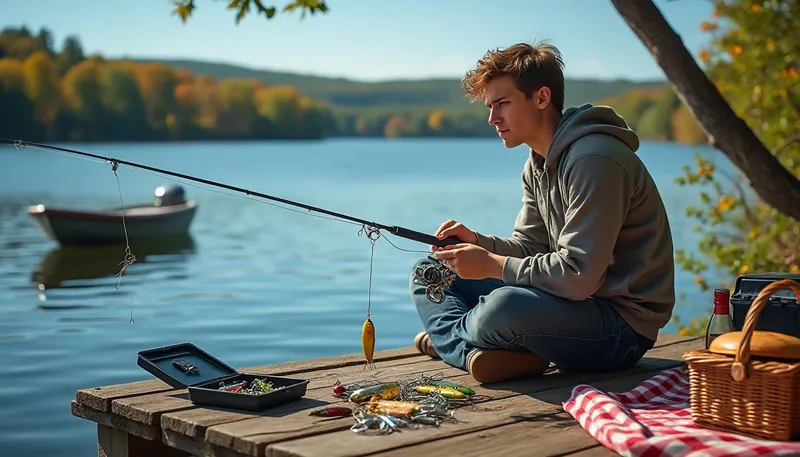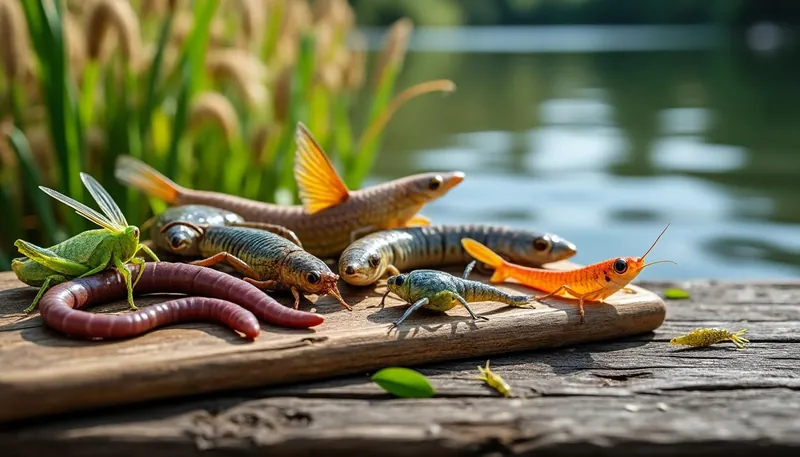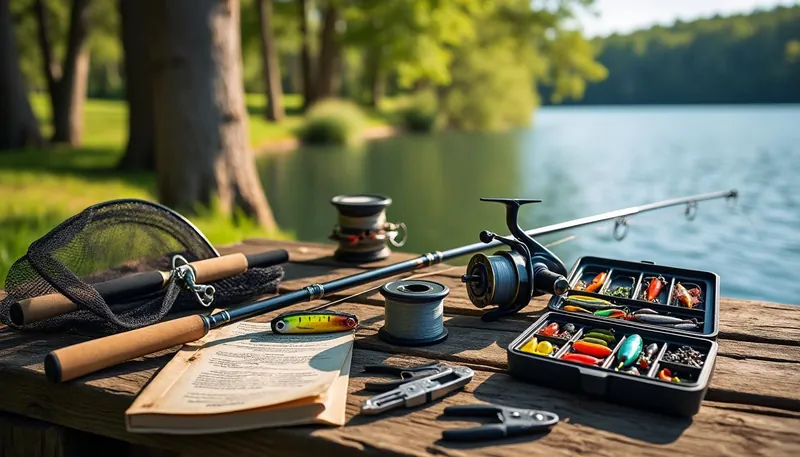Fishing enthusiasts know the excitement of throwing a line into the water, but it’s the rookie mistakes that can turn that thrill into frustration. Beginners often face a steep learning curve filled with pitfalls that can cost them not only their catches but also their enjoyment of the sport. The good news is that many of these errors are easily avoidable with a bit of knowledge and preparation. This guide highlights the most common mistakes that new anglers encounter, along with actionable insights on how to avoid them. The world of fishing holds myriad opportunities, but it also comes with its own set of challenges, and knowing these from the get-go can significantly enhance your experience on the water.
Brief
- 🔍 One of the biggest rookie mistakes is using inappropriate gear for the target fish species.
- ❌ Many beginners overlook local fishing regulations, which can lead to costly fines.
- 🎣 Poor casting technique is a common problem that can limit fishing success.
- 🌦️ Ignoring weather and water conditions can hinder your fishing strategy significantly.
- 🐟 Choosing the wrong bait or lures further complicates the fishing experience.
Using the Wrong Gear for the Fish Species
One recurring mistake among new anglers is opting for fishing gear that doesn’t align with the specific type of fish they are chasing. Many beginners make the mistake of grabbing any rod and reel combo available without understanding that various species require different setups. Using improper gear can hamper your ability to catch fish, as well as lead to damage to your equipment or losses of prized catches.
Why Matching Gear Matters
When you use gear that’s too lightweight for larger fish, such as bass or pike, you risk snapping your line or breaking your rod. Conversely, employing heavy tackle for smaller fish can make it difficult to feel bites, robbing you of the rewarding sensation of a successful catch. By ensuring that your gear is suitable for your target species, you not only boost your chances for success but also help in preserving the longevity of your gear.
Basic Gear Matching Guide
| Fish Species | Rod Power | Reel Size | Line Weight |
|---|---|---|---|
| Bluegill / Crappie | Ultralight | 1000-2000 | 2-6 lb test |
| Bass (Largemouth / Smallmouth) | Medium to Medium-Heavy | 2500-4000 | 8-15 lb test |
| Catfish | Medium-Heavy to Heavy | 4000+ | 15-30 lb test |
| Northern Pike / Musky | Heavy | 5000+ | 20-50 lb test (braid recommended) |
| Trout (Stocked / Wild) | Light to Medium-Light | 2000-3000 | 4-8 lb test |
Tips to Avoid This Mistake
- 📖 Conduct research on the fish species in your target waterway and what gear suits them best.
- 🏪 Visit a local tackle shop where staff can provide advice tailored to local conditions and species.
- 🛠️ For those just starting out, a medium power spinning rod with 8-10 lb test line is a versatile option for many freshwater species.
- ❌ Avoid using overly heavy gear for small fish to enhance your fishing experience.
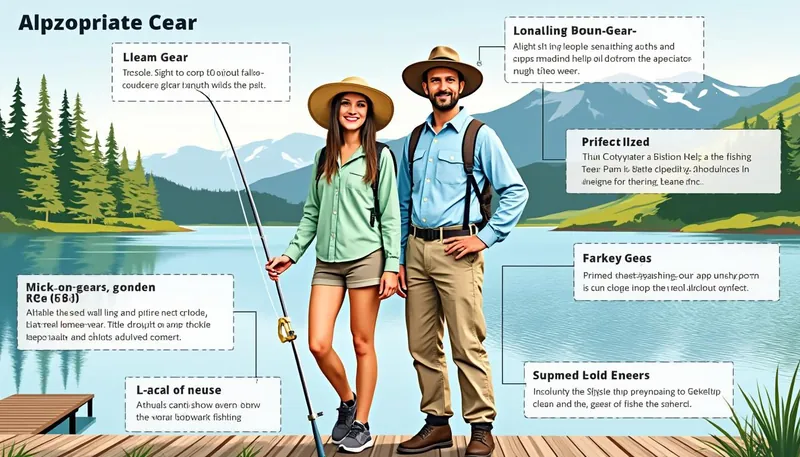
Ignoring Local Fishing Regulations
An often-overlooked aspect of fishing for beginners is the importance of understanding local fishing laws. In their eagerness to catch their first fish, many novices fail to learn about size limits, catch limits, and seasonal closures, which can result in hefty fines. For new anglers, the simplest oversight can turn a day of fishing into a regrettable experience.
Why Regulations Matter
Fishing regulations are not arbitrary; they exist to protect fish populations and ecosystems, ensuring that everyone can enjoy fishing for years to come. Ignoring these rules can harm local fish populations and disrupt the delicate balance necessary for sustainable fishing.
Common Rules You Should Know
| Regulation Type | What It Means | Why It Matters |
|---|---|---|
| Size Limits | Fish must be above or below a certain length to keep | This protects young or breeding-age fish |
| Catch Limits | A maximum number of fish you can keep per day | Prevents overfishing |
| Seasonal Closures | Specific times when fishing certain species is off-limits | Allows fish to spawn without disturbance |
| Gear Restrictions | Limits on bait or tackle use | Aims to protect non-target species |
| License Requirements | You must have a valid fishing license | Ensures legality and supports conservation efforts |
How to Stay Compliant
- 🖥️ Regularly check your state’s Department of Fish and Wildlife website for updates before fishing trips.
- 📲 Many states offer apps and downloadable guides for convenient access to regulations.
- 🔍 If in doubt, consult local bait shops or more experienced anglers to clarify any questions.
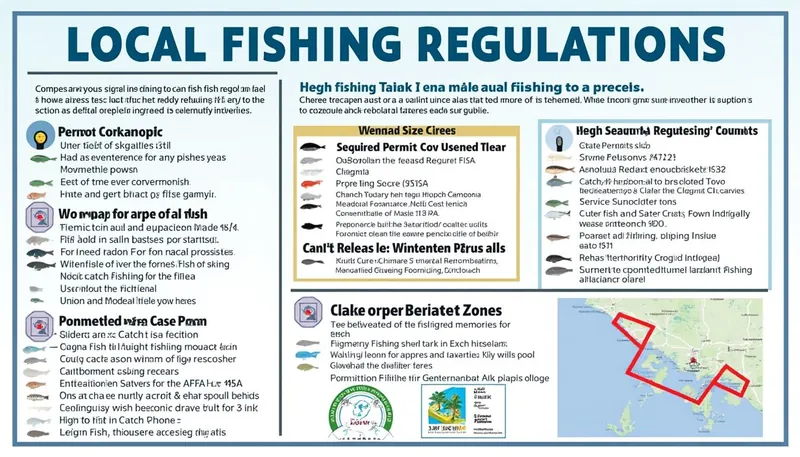
Poor Casting Technique
When fishing, the ability to cast accurately and effectively can significantly impact success rates. New anglers often struggle with adequately reaching target areas, causing good opportunities to slip by. Poor casting can waste time and scare potential fish away.
Why Good Casting Matters
Many fish species typically hang out in specific areas, like around structures, under overhangs, or near weed beds. If your casting fails to reach these zones accurately or lands with a disruptive splash, you are likely to miss out on potential catches. Mastering this skill is essential for maximizing fishing efficiency.
Common Casting Mistakes
| Mistake | Why It’s a Problem | How to Fix It |
|---|---|---|
| Lack of Distance | Not reaching fish that are farther out | Use proper rod action and practice for longer casts |
| Poor Aim | Lures land away from target zones | Practice aiming by selecting targets on land or water |
| Casting Too Hard | Loud splashes can scare nearby fish | Focus on timing and relaxation, let the rod do the work |
How to Improve Your Cast
You don’t have to be on water to hone this skill. Practicing in a backyard or park (with safety precautions) goes a long way. Resources such as videos and guides can also be immensely helpful. Approach casting with patience; muscle memory and technique improve over time.
- 🎯 Start with sidearm or overhead casts to maintain control.
- 🌊 Keep your casts low and tight if wind is problematic.
- 💪 Prioritize smooth motion over sheer force when casting.
Not Paying Attention to Weather and Water Conditions
Many novice anglers neglect to check the weather and water conditions before heading out. Factors such as temperature, wind, and water clarity significantly affect fish behavior, and ignoring them can diminish your fishing success.
Why Weather and Water Matter
Fish are particularly sensitive to their environment. Sudden temperature drops, changes in wind direction, or muddy water can change where they congregate and whether they’ll bite. Knowing how to interpret these signs can help adjust your fishing strategies, increasing your overall catch rate.
Common Weather & Water Factors That Affect Fishing
| Condition | Impact on Fish Behavior | What You Should Do |
|---|---|---|
| Wind | Drives baitfish to shore, stirring up food sources | Fish windy banks or points; try using moving baits |
| Temperature Drops | Slows fish metabolism, making them less active | Adjust your presentation and target deeper water |
| Tides (Saltwater) | Affects feeding times and spots for fish | Fish during incoming or outgoing tides for optimal action |
| Water Clarity | Muddy water reduces visibility for fish | Utilize noisy or brightly-colored lures to attract attention |
Pro Tips to Stay Ahead of the Game
- 🧭 Use apps like Windy or FishWeather for local forecasts.
- 🍃 Understand how seasonal changes affect local fish behavior.
- 🎣 Consult local anglers for real-time insights on conditions and material.
Overlooking the Importance of Bait and Lure Choice
One of the surefire ways to miss out on catching fish is to choose the wrong bait or lures. Many newcomers assume any bait will attract fish, which couldn’t be further from the truth. Various species respond to different types of bait—and factors like time of year or local waters play a crucial role, too.
Know Before You Cast
Don’t guess when it comes to selecting bait. Conducting a bit of research can save you precious time and frustration on the water. Seek advice from local tackle stores or online communities to discover what works best in specific areas.
Bait and Lure Guide by Environment
| Environment | Common Species | Recommended Bait/Lures |
|---|---|---|
| Freshwater Lakes | Bass, Bluegill, Crappie | Plastic worms, spinnerbaits, live minnows |
| Rivers & Streams | Trout, Smallmouth Bass | Nightcrawlers, inline spinners, salmon eggs |
| Ponds | Largemouth Bass, Catfish | Topwater frogs, stink bait, soft plastics |
| Saltwater Shoreline | Redfish, Snook, Flounder | Shrimp, cut bait, jig heads with soft plastics |
Quick Tips
- ⏱️ If you don’t get bites after 20–30 minutes, change your bait or lure.
- 🖌️ Match lure size to the species you are targeting for the best results.
- 🔍 Use naturally colored baits in clear water and brighter colors in murky water for better attraction.
What are the top fishing mistakes beginners make?
Beginners often err with gear selection, ignoring local regulations, poor casting techniques, misunderstanding fish behavior with weather conditions, and choosing the wrong bait.
How does bait presentation affect bites?
Poor presentation can result in unnatural movements, signaling fish to steer clear. Adjusting depth, action, and drift can greatly enhance your strike rates.
Why should I match hook size to fish species?
A mismatched hook can lead to lost catches and missed opportunities. Properly sized hooks ensure a secure hold when landing fish.
How do I stay updated with fishing regulations?
Check the local fish and wildlife site regularly and keep a copy of local rules
Is fish feeding time really important?
Absolutely! Fish tend to feed actively during dawn and dusk. Midday is often less productive, especially in warmer months.
